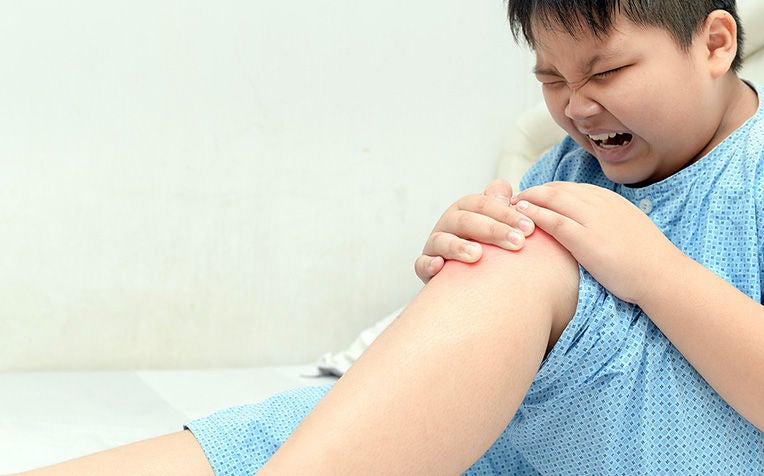
Limb deformities in children can range from being visually obvious, to causing movement difficulties and pain.
Limb deformities and discrepancies in children can occur as a result of congenital, trauma, infection, growth disturbance and tumours.
Visually, limb deformities may present as:
- Bowed legs
- Knock-knees
- Difference in limb lengths
Secondary symptoms include:
- Awkward walking gait
- Short stature
- Pain
Severity of limb deformities
The severity of a limb deformity in a child is measured using this general guide:
- Visually obvious but no symptoms
- Low risk of progression and future complications (Group A)
- High risk of progression and future complications (Group B)
- Visually obvious with symptoms (Group C)
- Example: Pain, limping, progressively worsening, unable to walk
“Patients in Group A can usually be managed by monitoring, whilst groups B and C usually need some form of intervention,” said Dr Lam Kai Yet, Consultant from the Department of Orthopaedic Surgery at KK Women’s and Children’s Hospital (KKH), a member of the SingHealth group.
If a limb deformity in a child is not assessed and corrected, it can lead to secondary complications such as contractures, arthritis or scoliosis.
Use of 3D-printing in orthopaedic treatment
Utilising 3D-printing technology, anatomically accurate 3D-printed limb models of the patient’s actual limb are created. These models not only enable patients and their families to better visualise the limb deformity, but are used in the assessment, planning, surgical simulation, family counselling and surgical intervention for the patient.
To know more about how 3D-printing can help children with limb deformities walk again, click here.
What parents can do if they suspect their child has a limb deformity
“First and foremost, seek advice from your primary care physician or paediatrician,” advised Dr Lam. “Most apparent limb deformities in children are physiological and are likely to resolve spontaneously, and your primary care physician should be able to help you determine this.”
If the primary care physician has a suspicion that the deformity is non–physiological, the child will likely be referred to a paediatric specialist clinic such as the Lower Limb Discrepancy (LLD) and Deformity Clinic at KKH.
Based on the diagnosis of the condition, a life-plan predicting the child’s projected limb length difference and deformity at end of maturity, as well as suggested interventions at which age, will be made known to the parents and child. This provides parents with a more comprehensive knowledge and expectation of their child’s development and growth.
“Earlier diagnosis of limb deformities can also sometimes enable earlier interventions via simpler surgical techniques,” Dr Lam said.
Ref: M19
Contributed by


















 Get it on Google Play
Get it on Google Play